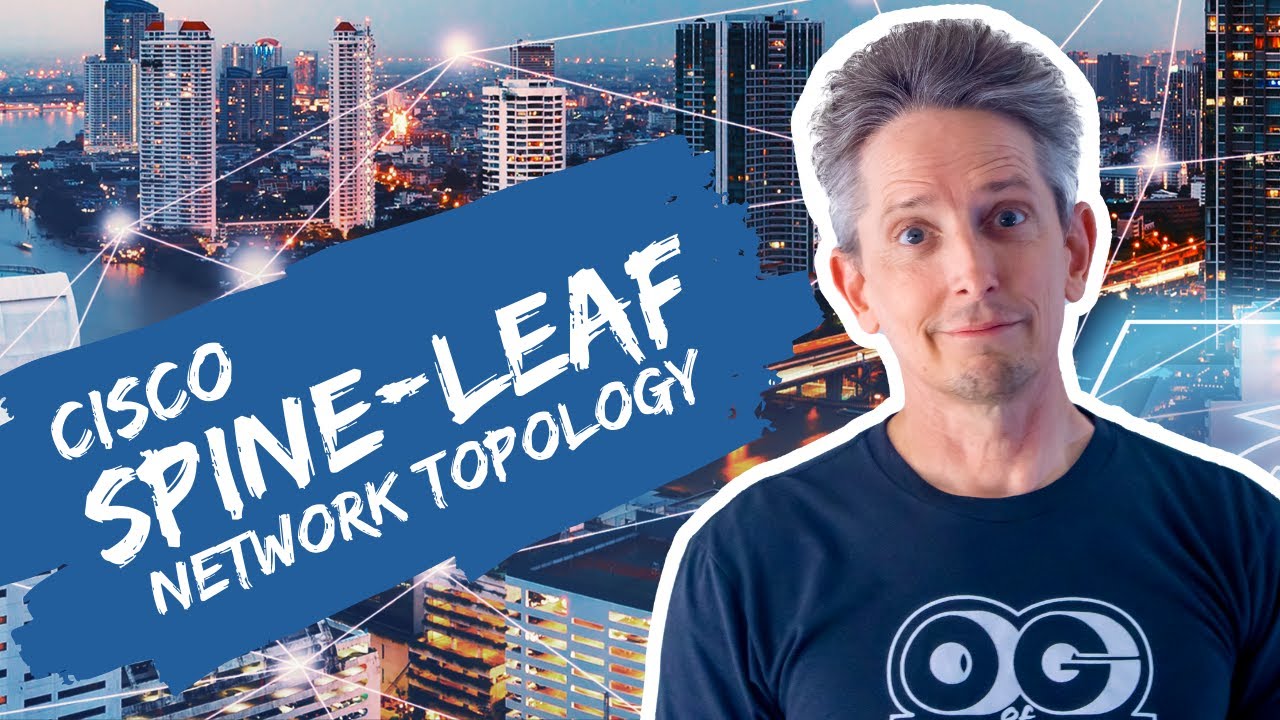Cisco ENCOR (350-401): VXLANs
Summary
TLDRIn this video, Kevin explains the concept of VXLAN (Virtual Extensible LAN) and its significance in modern networks, particularly for large-scale data centers. Unlike traditional VLANs, VXLANs support over 16 million identifiers, enabling efficient network virtualization. The video covers how VXLAN encapsulates Layer 2 traffic within Layer 3 packets, allowing seamless communication across routed networks. It also explains the role of VTEPs (VXLAN Tunnel Endpoints) and multicast groups in managing broadcast, unknown unicast, and multicast (BUM) traffic. VXLAN is shown as a scalable solution, overcoming VLAN limitations and optimizing network performance in virtualized environments.
Takeaways
- 😀 VXLANs (Virtual Extensible LANs) offer a scalable solution with over 16 million identifiers, far surpassing the 4,000 available in traditional VLANs.
- 😀 VXLANs can span Layer 3 boundaries, enabling communication across different networks, which is not possible with VLANs that are limited to Layer 2.
- 😀 The key component of VXLANs is the VXLAN Network Identifier (VNI), a 24-bit field that allows for over 16 million unique identifiers.
- 😀 VXLANs utilize an underlay network (physical infrastructure) and an overlay network (logical tunnels) to create isolated network segments.
- 😀 VTEPs (VXLAN Tunnel Endpoints) encapsulate Layer 2 traffic into Layer 3 packets and are responsible for forwarding VXLAN traffic between switches.
- 😀 VXLANs can efficiently handle BUM (Broadcast, Unknown Unicast, and Multicast) traffic using multicast groups to distribute it across the network.
- 😀 Unlike traditional VLANs, VXLANs allow logical communication between devices across Layer 3, even if they are physically separated.
- 😀 The spine-leaf architecture in data centers is ideal for VXLANs, enabling direct communication between any two leaf switches through the spine switches with minimal hops.
- 😀 VXLANs allow traffic load balancing across multiple links in port channels, helping to reduce congestion in high-demand environments.
- 😀 VXLANs can handle large-scale data center environments by providing logical isolation and efficient communication between virtual machines and servers, even across different Layer 3 segments.
Q & A
What is the main focus of this video?
-The main focus of this video is on VXLANs (Virtual Extensible LANs), specifically explaining their concepts and benefits for Cisco's ENCOR exam (350-401). The video covers how VXLANs can support over 16 million identifiers, as opposed to the 4,000 VLANs supported by traditional Ethernet switches.
How does VXLAN differ from traditional VLANs?
-VXLAN allows for more than 16 million network identifiers (VNIs), compared to the 4,000 VLANs supported by traditional Ethernet switches. This is possible due to VXLAN's use of a 24-bit VXLAN Network Identifier (VNI) instead of a 12-bit VLAN identifier.
What is the VXLAN encapsulation process?
-VXLAN encapsulates Layer 2 or Layer 3 traffic by adding a VXLAN header that includes the VXLAN Network Identifier (VNI). This allows VXLAN to run over an existing Layer 3 infrastructure, enabling communication across different networks or data centers.
What is the role of the underlay network in a VXLAN setup?
-The underlay network refers to the physical network infrastructure that supports VXLAN tunnels. It is used for routing traffic between VXLAN Tunnel Endpoints (VTEPs) but does not participate in VXLAN encapsulation itself.
How do VXLANs span Layer 3 boundaries?
-VXLANs span Layer 3 boundaries by allowing Layer 2 communication across different Layer 3 networks. This is achieved through VXLAN tunneling, where VXLAN encapsulated traffic is sent over a routed network, enabling broadcast domains to span multiple networks.
What is a VTEP and what is its role in VXLAN?
-A VTEP (VXLAN Tunnel Endpoint) is a device that encapsulates and decapsulates VXLAN traffic. It acts as the gateway between the VXLAN overlay network and the physical underlay network, forwarding traffic between VTEPs using IP addresses.
Why is multicast used in VXLAN, and what is its role?
-Multicast is used in VXLAN to handle Broadcast, Unknown Unicast, and Multicast (BUM) traffic. By using multicast groups, VXLAN allows VTEPs to share and flood BUM traffic to other VTEPs in the network. This ensures that devices can discover each other and communicate even when their exact location isn't known.
How does the VXLAN process handle unknown destination traffic?
-When traffic has an unknown destination (such as an ARP request), VXLAN uses multicast to flood this traffic to all VTEPs. The VTEP that owns the destination MAC address responds, enabling communication between the devices.
What is a spine-leaf topology, and how does it relate to VXLAN?
-A spine-leaf topology is commonly used in data centers where leaf switches connect to servers and spine switches interconnect leaf switches. In VXLAN, this topology is important as it allows VTEPs to create tunnels between leaf switches over the spine network, ensuring that data can traverse the network with minimal hops.
What are the benefits of VXLAN in data center environments?
-VXLAN provides several benefits in data centers, including scalability (over 16 million VNIs), the ability to span Layer 3 boundaries, and the flexibility to handle large numbers of virtualized environments. VXLAN also helps improve network efficiency by enabling better traffic distribution and load balancing.
Outlines

This section is available to paid users only. Please upgrade to access this part.
Upgrade NowMindmap

This section is available to paid users only. Please upgrade to access this part.
Upgrade NowKeywords

This section is available to paid users only. Please upgrade to access this part.
Upgrade NowHighlights

This section is available to paid users only. Please upgrade to access this part.
Upgrade NowTranscripts

This section is available to paid users only. Please upgrade to access this part.
Upgrade NowBrowse More Related Video

Virtual Extensible LAN - CompTIA Network+ N10-009 - 1.8

Cisco Spine-leaf Network Topology | Cisco CCNA 200-301

Membangun Jaringan Nirkabel - Teknik Komputer dan Jaringan

CCNA 200-301 en Français - Leçon 15 : Introduction aux réseaux longue distance : Ethernet WANs

Chapter 6 - Jaringan Komunikasi (part 1) | Informatika Booster

Inside a Data Center with 90,000 Servers
5.0 / 5 (0 votes)